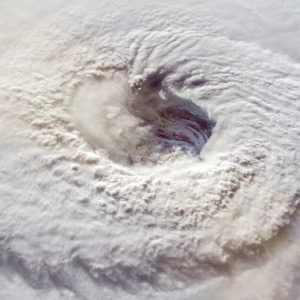Variety is usually a good thing, though when communicating threats associated with impending hurricanes this couldn’t be further from the truth.
The Saffir-Simpson Scale, which currently informs the public of how strong a hurricane is, has been around since the 1960s. Not only is it the scale the public relies on but it is the only scale they know, trust and easily comprehend.
However, it’s not lost on the meteorological community that this scale does have its drawbacks. Only accounting for wind speed and no other major hazards such as flooding potential, storm surge and storm breadth (diameter), many experts, including myself, agree that the Saffir-Simpson scale is far from perfect.
However, there is a reason meteorologists haven’t introduced new scales. Providing consumers with conflicting information would be confusing to say the least. Still, trying to gain some foothold from the National Weather Service in the public awareness “market,” AccuWeather developed the RealImpact Scale — which could realistically do more harm than good during critical moments.
Former AccuWeather CEO Barry Myers, who is still awaiting confirmation to head the National Oceanic and Atmospheric Administration, has long been a supporter of limiting free public access to services provided by the National Weather Service. AccuWeather plans to offer the RealImpact scale only to subscribers, including local news stations. Therefore, the RealImpact score also risks becoming more sensationalistic if it goes unregulated and media outlets think using it will boost ratings.
While competition in most markets is beneficial, this is one of the rare instances in which it could actually be extremely threatening to public safety. To classify a hurricane, the RealImpact Scale considers criteria other than wind, meaning its classification level could be considerably different than the Saffir-Simpson Scale’s.
One apparent parameter of the RealImpact Score is “total damage and economic impact.” This means that a hurricane making a direct landfall over a major urban area, such as Houston, could have a higher rating than if the same hurricane were to make landfall over a less populated area, such as South Padre Island, Texas. This could create a more dangerous situation for rural communities along U.S. coastlines if a storm’s overall economic impact is perceived to be less than if the same storm hit a major city. Thus, the RealImpact score may favor certain populations more, rather than valuing public safety and loss of infrastructure equally among all areas. As a result, opposing hurricane scales will undoubtedly spur confusion and panic in an already tense situation.
For example, imagine a hurricane is headed your way. You turn on your local news station and the meteorologist is using the RealImpact Scale and forecasting the hurricane as a Category 2. Then, the forecast is interrupted to air an emergency news conference in which the governor and state emergency manager are following the Saffir-Simpson Scale and reporting the same hurricane as a Category 5. How would residents be able to distinguish between the two, and how do they know who to take more seriously?
The RealImpact score also plans to consider storm surge and flooding potential, for which the National Weather Service already provides forecasts. If a hurricane is low on the Saffir-Simpson scale, but it is expected to produce dangerous storm surge, it is public officials’ responsibility to inform the public.
The truth is it’s impossible for a single number on a scale to convey all elements and threats associated with a hurricane, which is why it is important to listen to analyses by your local meteorologist and emergency officials on all hazards surrounding a hurricane.
In life-threatening situations, consumers deserve consistent information regarding imminent threats. The RealImpact Scale is an unnecessary, confusing and potentially unethical contribution to hurricane analysis. The last thing consumers need in a time of crisis is a deluge of conflicting information, and AccuWeather’s RealImpact Scale could potentially do exactly that.

